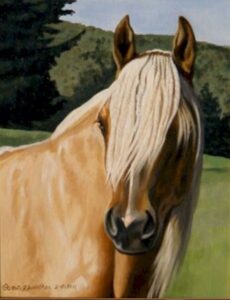Mediums

This is an example of a painting done in Acrylic.
Acrylic Paint
- Acrylic paint is water-based, containing pigment suspended in an acrylic polymer emulsion. It dries quickly and forms a flexible, water-resistant layer when dry.
- Acrylic paint dries quickly, typically within minutes to hours depending on thickness and environmental conditions.
- Acrylic paint can be opaque or transparent depending on the formulation. It can also be thinned with water to create translucent glazes.
- Acrylic paint allows for easy layering and blending, although it dries quickly, which can limit blending time.
- Acrylic paint is water-soluble when wet, making cleanup easy with water and soap. Once dry, it forms a permanent, water-resistant layer.

This is an example of a painting done in OIl.
Oil Paint
- Oil paint consists of pigment particles suspended in a drying oil, traditionally linseed oil. It dries slowly through oxidation, allowing for extended working time and blending on the canvas.
- Oil paint dries slowly, often taking days to weeks to fully cure depending on the thickness of the paint layer.
- Oil paint can be opaque or translucent, and its opacity can be adjusted by adding mediums or thinning with solvent.
- Oil paint offers extended working time, making it ideal for blending and layering techniques, including wet-on-wet and glazing.
- Oil paint requires solvents such as mineral spirits or turpentine for cleanup, and the brushes must be cleaned thoroughly to prevent the paint from drying and hardening.
Each medium offers its own unique characteristics and challenges, providing artists with diverse options for creative expression.

